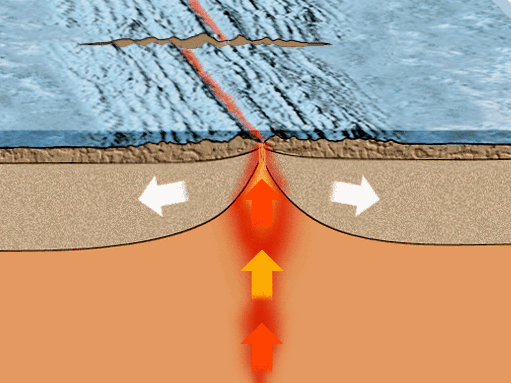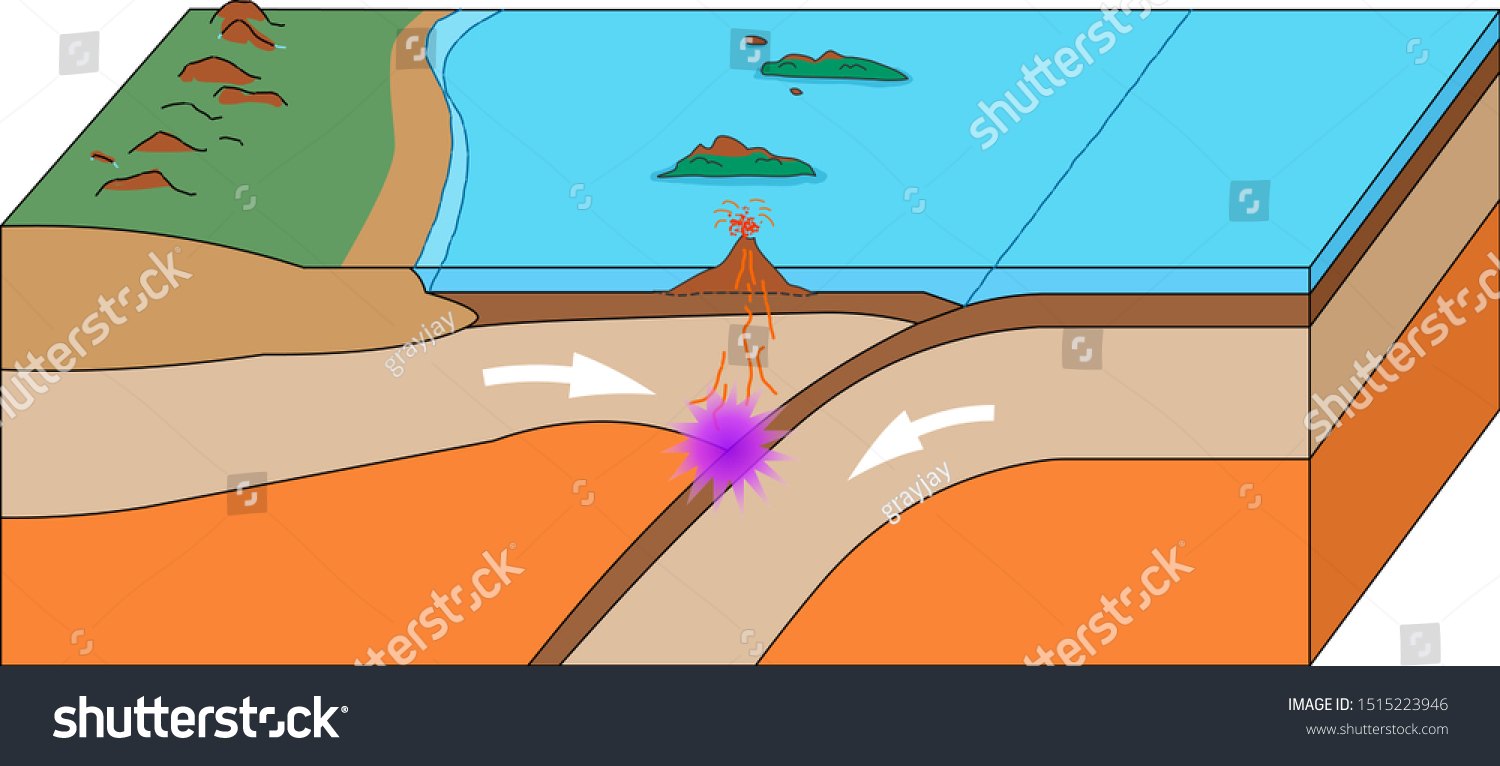3.1.5.2 Plate Tectonics
1/28
Earn XP
Description and Tags
A level Geography Tectonics Definitions + Past Paper Questions
Name | Mastery | Learn | Test | Matching | Spaced |
|---|
No study sessions yet.
29 Terms
Earth’s internal structure is composed of __ layers. Each of v___ t____ & v_____.
6
varying
thickness
viscosity
List the 6 layers of the earth’s internal structure
the crust, the lithosphere, asthenosphere, mantle, inner core and outer core
Important aspects of the mantle.
the mantle is a dense, hot layer of semi-solid rock, approximum 3000 km thick, it can be split into the upper mantle and lower mantle.
Important aspects of the crust.
averaging around 30 km in depth from 5km beneath the oceans to 100 km under large mountain ranges
Important aspects of the upper mantle.
the upper mantle itself contains two layers, the lithosphere and asthenosphere. The asthenosphere is semi-molten, whilst the lithosphere is solid and the lithosphere is rigid and ‘floats’ atop the asthenosphere.
Important aspects of the core.
at the centre lies the core, inner and outer and this is the densest part of Earth. The outer core is liquid due to pressure exerted from above, whilst the inner core is solid and around 1,250 km thick.
Properties of The Oceanic Crust
forms a bed of oceans
is thinner and younger as its constantly renewed when it is subducted into the mantle and reappears as new crustal material at subterranean constructive margins
average of 6 km thick
Properties of continental crust
older and thicker, an average of 36km thick
less dense material than oceanic crust
it floats on the mantle with more buoyancy and its the denser oceanic crust that descends into the mantle when the two types of crustal material collide at destructive margins.
What is radioactive decay?
the core releases considerable heat and this moves through the mantle in the form of rising convection currents
currents approach the crust and spread out horizontally, cool and sink back down into the mantle
this heat conveyor belt within the mantle is responsible for the movement of the crustal plates that make up the Earth’s surface as they are dragged across the Earth by the dominant convection currents.
Theory of Continental Drift
Alfred realised the coastlines fit together like a jigsaw puzzle
Theory of convection currents
substance is heated its density decreases and it rises until it cools sufficiently to sink again. According to Holmes this heating and cooling cycle within the Earth’s mantle caused the continents to move
Definition of Convection current
the circular motions of upper mantle layers responsible for sea floor spreading and driven by upwelling mantle material
Gravitational sliding definition
the movement of tectonic plates as a result of gravity
What is slab pull?
a driving force for the movement of plate boundaries occurring at subduction zones as a result of sinking of the crust there
Why does gravitational sliding happen?
takes place with plate movement driven because of the higher elevation of plates at ocean ridges
As fresh magma wells up at mid-ocean ridges to form new young, oceanic lithosphere, a higher elevation is formed at spreading ridges.
The new oceanic crust gradually cool and thickens with age and is pushed downwards as new magma emerges from the active zone of divergence behind it.
Explain the concept of slab pull in relation to plate movement [4 marks]
slab pull associated with destructive plate margins;
where one plate is being subducted under another;
the subducting plate is typically denser and less buoyant than the opposing plate so it’s forced to subduct;
with gravity acting on the leading edge of the plate helping to pull the rest of the plate with it;
What are the main characteristic processes operating at a constructive plate boundary?
Plates are pulled apart from each other. This could lead to the formation of rift valleys, volcanoes, oceanic ridges, seafloor spreading.
What are the main characteristic processes operating at a destructive plate boundary?
Subduction occurs where 2 plates converge. Subduction can lead to the formation of features such as deep sea trenches and island arcs.
What are the main characteristic processes operating at a conservative plate boundary?
Plates slide alongside each other either at different speed or in opposite directions. This can lead to formation of features such as fault lines.
Outline the processes which lead to the formation of fold mountains [4]
fold mountains are product of the convergence of tectonic plates
continental plates are forced together, this may be a result of slab pull and ridge push
Because neither crust is denser than the other, instead of subduction, it is forced together with a crumpling effect, whereby continental mass is warped and forced upwards
Others may consider the relationship between continental and ocean crust whereby the more dense ocean crust is forced into the mantle, leading to uplift of the continental crust. These fold mountains such as the Andes are associated with volcanic activity.
What are rift valleys formed on? Where do rift valleys formed? How are rift valleys formed?
Constructive plate margins, on continental areas due to the fracturing of brittle crust.
Areas of crust drop down between parallel faults to form the fracture.
What happens at constructive plate margins? Especially under the oceans?
Plates move away from each other and new crust is continually created

Describe features of a mid-oceanic ridge. And explain its formation.
Long, high and often complex structures of rifts and scarps.
Transform faults occur at right angles to the main plate boundary.
Where do volcanoes form? How are they formed?
Occurs along mid-oceanic ridges, sometimes rising above sea level to produce islands.
Such volcanoes are formed from basaltic lava which has a low viscosity and flows great distances, creating volcanoes with gentle sides. Volcanoes also form in association with rift valleys, especially in East Africa.
What is an Island Arc?
Where oceanic plates collide, subduction leads to increased friction and melting. The less dense material begins to rise through the crust, creating a series of volcanic islands.

What is the process of slab pull?
At destructive margins gravity forces lithosphere to descend into the mantle. The collision with the other plate causes both shallow and deep seismic activity.
Describe the characteristics and explain the formation of deep sea trenches [4]
When two oceanic plates converge, one usually subducts under the other and in the process a trench is formed. Like the mariana trench where the fast moving pacific plate converges against the slower moving Philippine Plate. The Challenger Deep, at the southern end of the Mariana Trench is the deepest part of the ocean at nearly 11000m.
Trenches can also be produced at oceanic/continental convergence points, such as along the west coast of South America where the Nazca plate is subducting under the South American plate, forming the Peru-Chile trench.
Describe the characteristics and explain the formation of island arcs [4]
Subduction processes in plate convergence also result in the formation of volcanoes which over millions of years pile up lava on the ocean floor until a submarine volcano rises above sea level to form an island volcano.
Such volcanoes are typically strung out in curved cains called island arcs. Magma that formed island arcs are produced by the partial melting of the descending plate or the overlying oceanic lithosphere. The descending plate also provides a source of stress as the two plates interact, leading to frequent, moderate to strong earthquakes.
Describe magma plumes [1]
Areas within the mantle where hotter, less dense magma rises towards the surface